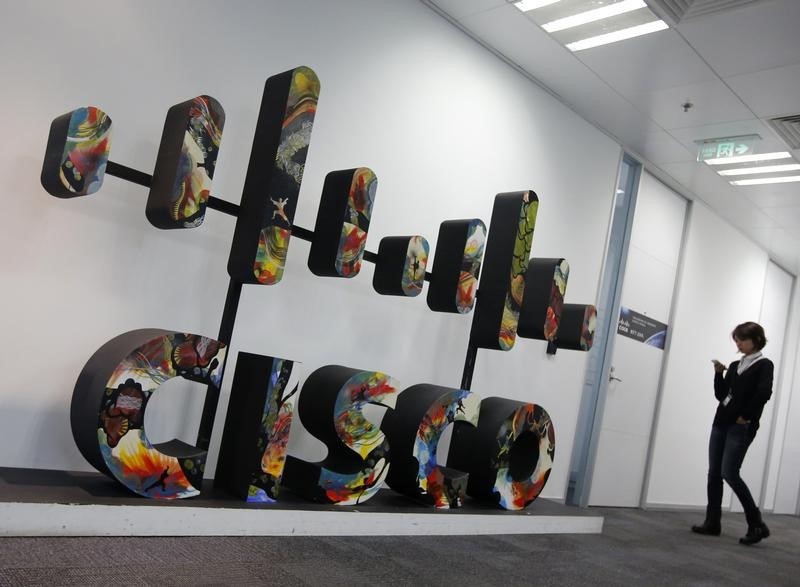 © Reuters. Dow Jones, Nasdaq, S&P 500 weekly preview: Focus on debt ceiling talks
© Reuters. Dow Jones, Nasdaq, S&P 500 weekly preview: Focus on debt ceiling talks
U.S. futures are trading higher on Monday, mostly thanks to the better-than-feared news on the debt ceiling.
Last week, the S&P 500 closed 0.3% lower after previously failing to close below 4,100 on a weekly basis. The forward 12-month P/E ratio for the S&P 500 is 18.0, which puts it below the 5-year average and above the 10-year average.
Dow Jones Industrial Average fell 1.1%, which is a worrying sign given that the index had lost 1.2% in the first week of May. It now trades below the 100 weekly moving average (WMA).
On the other hand, NASDAQ Composite Index gained 0.4% as mega-cap tech stocks continue to benefit from the increased macro uncertainty. Last week, the tech-heavy IXIC hit its highest level since August 2022.
Overall, the trading volume last week was light. Communication Services and Consumer Discretionary did well.
Looking forward to this week, the retail sales data for April is out on Thursday. Several Fed officials will also speak this week while investor focus will remain on the debt ceiling negotiations.
Q1 earnings providing support to stocks
As of May 12, 92% of S&P 500 companies reporting actual results, according to FactSet. 78% of S&P 500 companies have reported a positive EPS surprise and 75% of S&P 500 companies have reported a positive revenue surprise.
“The improvement has been fairly broad-based, with the median estimate up by 1.2% over the last two months. The weaker dollar, cost-cutting initiatives, stabilization in some end-markets such as housing, cloud computing, and digital advertising, as well as stronger growth in Europe and China have all played a role,” UBS analysts wrote in a note to clients.
Overall, the Q1 EPS for the S&P 500 is down 2.5%, much better than the expected -6.7%, according to FactSet.
“If -2.5% is the actual decline for the quarter, it will mark the second straight quarter that the index has reported a decline in earnings,” FactSet analysts wrote.
Key earnings reports to watch for this week are Home Depot (NYSE:HD), Target (NYSE:TGT), Cisco Systems (NASDAQ:CSCO), Alibaba (NYSE:BABA), Walmart (NYSE:WMT), and Deere (NYSE:DE).
What analysts are saying?
UBS analysts: “Leading indicators of profit growth continue to suggest that caution in US equity positioning is warranted.”
Vital Knowledge analysts: “The combination of earnings strength, the end of Fed rate hikes and continued US disinflation, and extreme negativity are all powerful equity tailwinds – this has been our thesis for months, and we’re sticking with it until something changes. There are many aspects of this market we don’t like, including valuations, breadth, and debt ceiling risks, but these don’t offset the aforementioned positives."
Goldman Sachs analysts: “1Q results give us incremental confidence in our above-consensus EPS estimate of $224 in 2023, representing +1% growth. We believe the worst phase of negative earnings revisions is now behind us. However, we maintain our below-consensus 2024 EPS estimate of $237 (+5% growth), as we view consensus margin estimates as too optimistic. Risks to our profit outlook are tilted to the downside given uncertainty around banking stress. We expect real yields will rise and the P/E multiple will fall from 18x to 17x. If the P/E remains stable, it would represent 5% upside to our year-end target of 4000.”
Roth MKM analysts: “While Breadth is thinning, rotation under the surface continues and tactically we can still engage with stocks, although the pool is getting smaller.”
Citi analysts: “We maintain our ongoing call that earnings will prove resilient relative to historic recession compares. That said, we also suspect that headwinds to earnings growth will persist into 2024. These include, but are not limited to, margin compression risk, tighter credit conditions, a fade in post pandemic demand surge, etc.”
Barclays analysts: “Equity risk premium (ERP) has been surprisingly low despite an increase in recession risk, sticky inflation, and the overhang of ‘known’ and ‘unknown’ tail risks amidst continued macro uncertainty. Even a modest re-pricing of ERP has the potential to dent equity returns meaningfully.”
Wells Fargo analysts: “Market gains continue to be dominated by über-caps, masking the fact that 48% of S&P500 member stocks are down YTD. We remain near-term bearish as focus shifts from Q1 earnings to a macro fraught with economic and political risks.”

